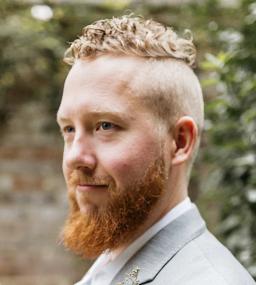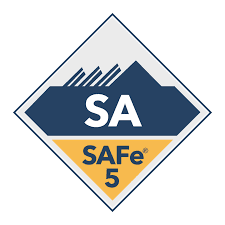Over this past weekend, I had the opportunity to take a Leading SAFe training course taught by the amazing instructor - Harry Narang! All I can say is that this course is one of the best I have attended in my career. I give Harry a lot of the credit for his engaging training style. He not only taught us about the Scaled Agile Framework, but he engaged the class in exercises that allowed us to apply the concepts we learned in a practical setting allowing us to apply the framework by injecting our own experiences.
As a young technologist in the early part of my career working at larger companies that practice Agile, I always thought I had a good grasp on how to deliver utilizing Agile methodologies. While this is true at the team level, the Leading SAFe class opened my eyes to numerous opportunities for improvement across an organization and introduced the concept of scaling agile to work beyond a single team. The framework is well designed and comprehensive, and I am excited to begin implementing what I have learned across projects at Digital Polygon as we embrace the new methodology and extend its benefits to our customers.
Key Takeaways from Leading SAFe:
While there are countless learnings from the class, here are my top 5 takeaways from it:
- The definition of the "1-point" ticket - Story points are something that many of us use in our projects to estimate size of user stories. All too often I see teams referencing a "1-point" ticket to an increment of time rather than applying it to the simplest piece of work in the backlog.
- Holding Cost vs. Transactional Cost - The framework outlined in the SAFe discusses Holding Cost - or the cost of holding a feature back from productions - vs. Transactional Cost - the cost/overhead of releasing a feature to production. While this is not a new concept to me, the way it was outlined/visualized will help us have the valuable conversations with IT leadership to help inform decisions.
- Product Management over Project Management - I find myself talking about "Projects" on a regular basis. The idea that we treat every "project" as a "product" is game-changing. Technology continues to evolve and technology is never "done". If we treat each engagement as a product and incorporate true Agile as opposed to Waterfall or "Agilefall" we can keep up with the ever changing market.
- Fund the Factory - Not the Product - This concept is at the core of SAFe's framework. The idea of funding value streams as opposed to projects resonated with me. By keeping the focus on providing continuous value, teams can stay hyper-focused on the needs of their customers and avoid the common pitfalls of taking a project-based approach that tend to have definitive beginning and end dates. In reality, products and services evolve over time and require a new funding approach that understands the evolving needs of the customer. This approach will be extremely valuable in conversations with prospective clients who are new to Agile.
- Built-in Quality - This isn't a new concept to me, but the fact that it is a core part of the SAFe framework sold me on it immediately. Building technology with quality and scalability in mind from the start speaks to me as an Architect and has been something I have tried to incorporate into every product engagement
I am looking forward to continuing my journey with the Scaled Agile Framework and will update this once I pass the Leading SAFe certification exam becoming a SAFe Agilist.
If you want to learn more about the SAFe framework, check out Bill Annibell's post on "Why Scaled Agile: Part 1". Bill gives a great overview of the benefits of the framework and goes into the benefits it can have for your organization.

